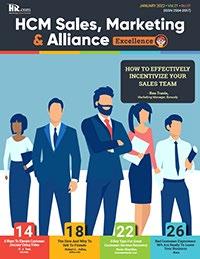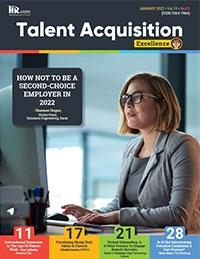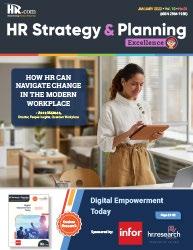



















Why is your trustworthiness important to you?
- Yoram Solomon, Founder, Innovation Culture Institute™ LLC.
Simple Tips To Help You Organize A Successful ‘Secret Santa’ This Year

Here’s what you need to know to make it a success!
- Shanon O’Donovan, Writer, Cath Kidston
Five principles, personal actions, and reflection questions to help you
- Dave Ulrich, Rensis Likert Professor, The Ross School of Business
A back-to-basics approach to teamwork and corporate culture

- Colleen Doyle Bryant, Author, LoveWell Press

It’s that time of the year again when you start planning your priorities for next year. You reflect on what worked, what didn’t, and how to improve going forward into 2023. And before we welcome the fresh year, let us focus on ways to spread Christmas cheer in the workplace.
completely achieved. Next year, choose one old behavior that needs to change. If you need some help on this, do check out Yoram Solomon’s article, Your 2023 Challenge: Form A New Trust Habit
If you haven’t organized your organization’s holiday party, don’t panic. There’s still time to put on a great event. Check out Danielle Diliberti’s article, Ring In The Cheer With A Truly Special Virtual Holiday Party, where she offers great ideas to enjoy some precious time with your employees.
When we talk about celebrations, fun and enjoyment, let us also not forget to provide a helping hand to those who really need it. If your friends or colleagues are tending into an emotional funk, what can you offer? In his article, Moving From Helplessness To Hopefulness, Dave Ulrich suggests five principles, personal actions, and reflection questions that offer you a blueprint for replacing helplessness with hopefulness at work and at home.

For customer service, or information on products and services, call 1-877-472-6648

Who doesn’t like holding a mysterious parcel in their hands, untying the bow and wondering what could possibly be underneath that shiny reindeer wrapping paper? While many people will have likely heard of the term ‘Secret Santa’, not everybody will have taken part. Shanon O’Donovan’s article, Simple Tips To Help You Organize A Successful ‘Secret Santa’ This Year, provides ideas to make your Secret Santa game more fun this year!
If you could achieve anything in the new year, what would that be? We often start the year with many challenges and goals, just to end it with nothing
In brief, the December edition of Personal Excellence is all about different approaches that will help you stay motivated and productive. Take some time to reflect on life lessons that you learned this year and focus on the new year that offers new opportunities, strength and resilience.
Wishing you and your loved ones peace, health, happiness!
Write to the Editor at ePubEditors@hr.com
Personal Excellence (ISSN 2564-1948)
is published monthly by HR.com Limited, 56 Malone Road, Jacksons Point, Ontario L0E 1L0 Internet Address: www.hr.com
Copyright © 2022 HR.com. No part of this publication may be reproduced or transmitted in any form without written permission from the publisher. Quotations must be credited.
Disclaimer: The views, information, or opinions expressed in the Excellence ePublications are solely those of the authors and do not necessarily represent those of HR.com and its employees. Under no circumstances shall HR.com or its partners or affiliates be responsible or liable for any indirect or incidental damages arising out of these opinions and content.
Babitha Balakrishnan Editor, Personal ExcellenceIn a world of unparalleled challenges (global pandemic, racial injustice, political rivalry, digital 4.0, emotional malaise), uncertainty reigns. Finding opportunity in this context requires harnessing uncertainty and harnessing starts with reliable, valid, timely, and useful information. The Excellence publications are a superb source of such information. The authors provide insights with impact that will guide thought and action.
Rensis Likert Professor, Ross School of Business, University of Michigan Partner, The RBL Group

Excellence publications are my ‘go-to’ resource for contemporary and actionable information to improve leadership, engagement, results, and retention. Each edition offers rich and diverse perspectives for improving the employee experience and the workplace in general.

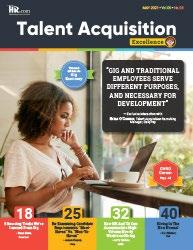

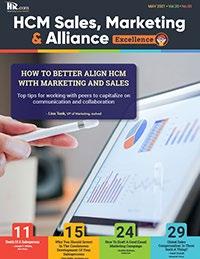



Author, Virtual /Live Keynote Presenter, Inc.’s Top 100 Leadership Speakers

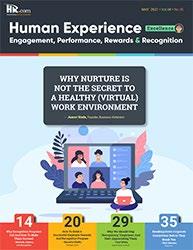
I regularly read and contribute to Leadership Excellence and Talent Management Excellence. I use many of the articles I read to augment my own presentations and I often share the articles with my clients. They are always quick, right on target for the latest issues in my field, and appreciated by my clients. If you want to stay up to date on the latest HR trends, choose a few of the different issues from the Excellence series of publications.


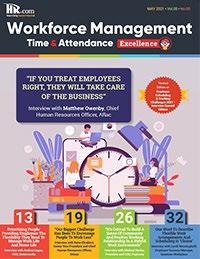

 Dr. Beverly Kaye CEO,
Dr. Beverly Kaye CEO,
BevKaye&Co.

We’re already in December and you haven’t organized your organization’s holiday party. Don’t panic. There’s still time to put on a great event.
Of course, it’s not always a welcomed task. While they can be a lot of fun, we all know that holiday parties can go awry, such as when people feel obligated to attend or a guest forgets they’re in a workplace setting.
It’s what led comedienne Phyllis Diller to quip: “What I don’t like about office Christmas parties is looking for a job the next day.”
As an event planner, you want guests to be talking well into the New Year about your holiday party, but not as whispering gossip. You want them to remark on what a great experience it was. That’s why many companies are continuing a trend that
started during the pandemic: hosting a virtual holiday party.
Fortunately, there are plenty of options. You just have to decide what will work best for your organization.
Your employees have enough interaction over Zoom in their workday, so why host a holiday party online? Actually, many workers appreciate it. A virtual gathering is convenient, can be fun, and doesn’t take a full day and night away from their personal life.
In today’s workforce, many teams are distributed, with some still working remotely or splitting time between home and the office. They’re used to being able to work from the comfort of their home offices, and so some might be reluctant to stay late at the
office or dress up to attend an in-person holiday event.
You just have to decide what kind of virtual function you want to offer. Here are a few options:
● Secret Gift Giving. Each person is assigned a coworker for whom they purchase a gift that costs no more than $20. At the party, each person opens their gift and tries to guess who sent it.
● Gingerbread-House Making Class. We all love to eat gingerbread, but who knows how to make a gingerbread house from scratch? At these virtual parties, folks (who have been sent the ingredients ahead of time) come together to learn from a teacher the art of making a yummy gingerbread house.
● Charity Event. The holiday season is about giving as much as it is about receiving, and so many organizations work with a platform that specializes in corporate and employee giving. Employees find people who will match their donations. Then, at the virtual event, it’s announced how much the chosen charity received due to everyone’s generosity.
When it’s time to throw a holiday party, some companies want to do something extra special to show how much they appreciate their employees. A holiday wine experience is a modern way to

celebrate colleagues. Here are some ways a virtual wine event is a great choice during the holiday season:
● Your sales team met or beat their end-of-year sales goals. A private wine experience is a meaningful way to show gratitude for their hard work.
● You cater to high-end clients, such as big investors or donors, and you want to make sure they know you appreciate them. Hosting a virtual event is convenient and cost-effective.
● You’re struggling to maintain workforce levels, and so it’s important for your holiday party to stand out compared to what’s offered by other companies.
Planning this kind of holiday party takes some know-how, so you might want to consider partnering with a company that specializes in virtual wine tastings. It’s important to find a platform that can handle any size group and take care of all logistics. For example, guests will need to receive their wines before the events, and you’ll want to be paired with an experienced sommelier who leads the events.
Let’s look more closely at what’s involved with working with a wine experience partner. These events are divided into planning, the event itself, and follow-up giving.
Ring In The Cheer With A Truly Special Virtual Holiday PartyPlanning. Much of the behind-thescenes planning is between you and the representative of your wine-experience partner. They’ll work with you to help you select the right kind of wine event for your guests. For example, would they prefer something that’s more educational about wines or to be more relaxed and social?
You’ll work with your rep to select a great sommelier to facilitate and the wines to be tasted. You might want to take into account religious affiliation, socioeconomic level, and knowledge about wines. What you’ll discover is that some wines say “holiday.” That could be sparkling rosé or a robust red like a petite Syrah.

Of course, no holiday party would be complete without some delicious savory food or dessert pairings. There are many options that perfectly complement the wines you’ll be tasting, whether that’s a small-dairy cheese or all-natural chocolates. Your vendor can work with you on those selections.
The Event. When folks come together for the party, they’ll meet their sommelier. An experienced somm not only educates everyone about the wines but helps keep the conversation flowing, and that includes topics other than wine. At successful wine events, guests feel comfortable sharing and even those who might be coworkers get to know each other better.
You’ll want to infuse a lot of holiday spirit into your gathering and your rep can give you ideas on how to do that. For example, in addition to being sent the wines, they can also receive a set of holiday tasting glasses. During the event, folks can talk about how their families celebrated the holidays when they were young. And, of course, each guest can choose a fun, holiday-themed background so the experience is full of lights and color.
Continued Giving. The good feelings shouldn’t stop when the party is over, and wine serves as the perfect follow-up gift to remind guests that they’re
still appreciated well into the following year. Your vendor should have an infrastructure so that guests can easily request to be sent their favorite wine after the event.
This holiday season, look into organizing a virtual wine experience for your holiday party. Your guests will experience an event to remember and feel valued as team members. With continued wine gift-giving, you can extend that feeling of appreciation throughout the following year in a personalized way. And remember that a wine experience doesn’t only have to happen during the holidays. It’s a great way for an organization to stay connected to investors, donors, and hard-working team members.
Danielle Diliberti is CEO of Sommsation , the leading wine experience platform that gives wine enthusiasts and novices access to top-tier wines, sommeliers, and wineries. Would you like to comment?

It’s that time of the year when you start planning your priorities for next year. There is one priority you should add to the list that would greatly impact you personally and professionally. Next year, be more trusted. You never focused on that in the past because you didn’t have a plan or didn’t know how to do it. This is about to change.
But first, what motivates you to be more trusted? Often, the focus is on the benefits of high trust levels to the organization. However, when you are trusted, research showed that you would feel 74% less stress, 40% less burnout, 106% more energy, 60% more job, and 56% higher job satisfaction. When your boss trusts you, you will get 67% higher autonomy to do your job. When a team member trusts you, they will allow themselves to be 240% more open and vulnerable with you and will be 106% more willing to give you the feedback you need to hear (rather than what they think you want to hear). That feedback is important to your growth, but you must be trusted first.
Trust is the product of your trustworthiness, and your trustworthiness is the product of who you are and what you do or how you behave when you interact with the person you want to be trusted by. To be trusted, you have two options: develop a new positive behavior, or eliminate one negative behavior that could be currently holding you back from being more trusted. Research shows that people react
much stronger to negative events or behaviors than to positive ones. So, instead of developing one new positive behavior, you should identify one old negative behavior that is holding you back from being more trusted and focus on eliminating that.
Why only one? We often start the year with many challenges and goals, just to end it with nothing completely achieved. Achieving goals takes effort, and spreading the effort is a major obstacle to success. Besides, becoming more trusted is a journey you don’t have to complete in one year. Next year, choose one old behavior that needs to change. You will have a much higher probability of success, you will increase your trustworthiness, and you can choose the next behavior the following year.
Knowing which old behavior needs to change is not enough. This behavior is likely already ingrained in you and will be hard to change. To change it, you must develop a new habit. Developing habits is not simple, easy, or quick; it takes effort over an extended period. There is no amount of money you can pay someone to form the new habit for you, just like you can’t pay anyone to lose weight for you if you want to. You need a process. A plan. Just like the following.
The process is highly prescriptive and structured and exists in the intersection between the sciences of trust and habit-forming. It is made of the following seven steps:
1. Focus on one relationship. Trust is relative. The same behavior that would cause one person to trust you could cause another person to distrust you. Nevertheless, the behavior that holds you back from being more trusted in one relationship could be doing the same in another. Choose a relationship in which the other person depends on you. If you eliminate the behavior in that relationship, you will notice the biggest increase in trust in you.
2. Select one old behavior that must change. There are many good (and bad) behaviors that affect that relationship. Either ask the other person or ask a third person to help you identify which of your old behaviors adversely impacts that relationship the most.
3. Identify a new habit that will change the old behavior. Sometimes, the new habit could simply be to stop the old behavior.
4. Make it SMART. The new habit cannot be vague or unclear, or it will not be actionable. It must be Specific, Measurable, Achievable (although not too easy), Relevant (and impactful in eliminating the old behavior), and Time-bound.
5. Make it stick. Do whatever you can to allow yourself to stick with it until it becomes a new habit and the old behavior is gone. Eliminate friction from the new habit (or add friction to the old behavior). Stack habits. Use technology where possible, and use extrinsic motivation (give yourself a carrot as long as you stick with the habit or a stick when you don’t).
6. Appoint an accountability partner. Someone who regularly checks on your progress and holds you accountable to execute your plan. Meeting regularly with your accountability partner increases the probability of success by almost 50%.
7. Keep going until the new habit is established. There is no fixed amount of time it takes to form a habit, and there is also no hard line between a behavior being a habit or not. Different habits will take a different amount of time to form, and the same habit might take a different amount of time for different people to form. Keep going until the new behavior becomes automatic or until it is easier to keep doing it than to stop.
And there it is: your 2023 challenge is to form one new habit that will change one old behavior that’s holding you back from being more trusted in one (or more) relationships. It will have the biggest impact on your personal and professional success and enjoyment.

Yoram Solomon, Ph.D., MBA, LLB, is the author of The Book of Trust®, host of The Trust Show podcast, founder of the Innovation Culture Institute™ LLC, and facilitator of the Trust Habits™ workshop. Would you like to comment?


and failure are often mistakenly looked upon as opposites, much like hot and cold, wet and dry, and day and night. In reality, when viewed properly and acted upon, success and failure are both parts of the same process.
Samuel Beckett was born in the early 20th century in Ireland. During World War II, he was part of the French Resistance and will forever be known as a poet, novelist, and playwright, winning the Nobel prize for literature in 1969. Beckett spoke to the nature of success and failure when he said, “Try again. Fail again. Fail better.”
Too often, we look upon success in a solitary way. We assume that it is the finish line, the summit of the mountain, or the attainment of a goal. In reality, success comes when we strive to improve ourselves and our performance in the pursuit of a worthwhile goal.
As a former competitive Olympic weightlifter, I remember being inundated with an endless string of statistics related to my performance. These statistics were compared to world records, national records, and Olympic records. In the final analysis, as an athlete or in my personal and professional life, the only statistic that really matters is one that all competitors know as “personal best.” Personal best is simply the highest or best performance you have ever had in a competition, task, or activity. The factors that matter surrounding your personal best involve how much and how often you are improving.
When you begin weightlifting or any other human endeavor, your performance is inevitably poor, but it improves rapidly and significantly. As you approach world-class status or the top of your field, your personal best will improve very slightly and seldomly.
Each of the steps along the way could be viewed as a failure in light of your goal, but these incremental steps are actually the stairway to heaven in your quest to succeed.

Failure is never final. If you persist, it is only the fertilizer to grow your future success.
As you go through your day today, prepare to fail your way to success.
Jim Stovall is the President of the Emmy-award-winning Narrative Television Network and a published author of more than 50 books—eight of which have been turned into movies. He is also a highly sought-after platform speaker. Would you like to comment?

For many people, the thought of receiving gifts is the best part of Christmas. Who doesn’t like holding a mysterious parcel in their hands, untying the bow and wondering what could possibly be underneath that shiny reindeer wrapping paper?
The act of giving gifts is an ancient tradition, one that’s thought to be as old as humanity itself. Being the recipient of a gift is great but being the giftee can be even more special. This element of Christmas is an opportunity to spoil a loved one and let them know how much they mean to you.
That’s not to say that the gesture doesn’t come without any pressure, however. Is this gift too expensive? Too cheap? Will they like it, or will they want to return it? One way to make gift-giving a fun, relaxed, and controlled occasion is to organize a Secret Santa party amongst your friends, colleagues, and family.
Here’s what you need to know to make it a success!
While many people will have likely heard of the term ‘Secret Santa’, not everybody will have taken part. So, it’d be a good idea to start off the activity by ensuring everyone knows exactly how to play and what rules there are. It doesn’t have to be strict (it is
Christmas, after all!) but laying down some guidelines will guarantee each member of the group knows what to expect.
How you choose to arrange the occasion is completely up to you and your group. You could do the Yankee Swap (everyone selects or steals a gift from another player), Santa’s Casino (money in a jackpot) or Pass the Gift (what it says on the tin!).
If you want to keep things simple, however, just follow this fool-proof process:
Step one: Gather all participants at your house, a bar, or the office communal area.
Step two: Put everyone’s name into a hat.
Step three: Each person takes turns retrieving a name from the hat. Whoever they pick is their giftee.
Step four: Buy the gift for the person you’ve been given. Meanwhile, the person who picked your name (your very own ‘Secret Santa’) will be buying a gift for you.
Step five: Everyone exchanges gifts on the agreed time and date. This could be the staff Christmas party if your group is made up of colleagues, or a festive night out / in if you're playing with friends and family.
Step six: Ta-da! You’ve taken part in Secret Santa.
This time of year, it’s important to be mindful of everyone’s individual financial situations. Purchasing gifts can be an expensive task, especially when you have multiple people to buy for. Secret Santa does alleviate some of that pressure, because instead of having 11 family members or six colleagues to buy for, you just purchase a gift for one, but some sensitivity and consideration will still go a long way.
Ask each participant how much they’d want to spend on the gift – you could do this anonymously, if you feel that the question might make people uncomfortable. From there, take everybody’s answers and find a happy medium. You could also set the budget as ‘up to £X’ to give people the opportunity to spend a little less if the final figure is still beyond their sweet spot.
For many people, taking part in Secret Santa is an opportunity to show their humorous side and be a little silly! When you have the name of your giftee, to be a successful Secret Santa you must first decide whether you want your gift to be funny or serious.

Google Keyword Planner revealed that, In November 2021, ‘secret santa funny ideas’ received 60,500 Google searches.
If you’ve picked a female colleague that you’re not super close with, it might be a good idea to keep things safe and simple with a nice purse or scented bath and body set (within the agreed budget, of course). If your recipient is someone you can have a good laugh with, like a close friend or an uncle, you could push the boundaries and be a bit more daring, such as by purchasing a funny self-help book or a mug with your face on.









Now you have a firm idea of how Secret Santa works, here are some top tips to ensure it goes tree-mendously!




Avoid guessing clothing sizes – This is somewhat self-explanatory. Not only could this cause offense, but it’s also super easy to get wrong and then your recipient is left with a gift that they can’t wear, nor can they return.

Don’t leave it to the last minute – We're all guilty of putting things off ‘until tomorrow’ and then finding ourselves caught short when there are no more tomorrows left. Play it safe and purchase your gift way in advance of the agreed exchange date. ‘Last minute Secret Santa gifts’ was hit with 210 searches in November 2021 – don't be one of these people, if you can help it.
Stick to the budget – You arranged a budget for a reason. While it might be fine for members of your party to dip a little under the agreed maximum budget if they need to, be mindful of going too far under as it could come across as though you don’t care enough. In a similar way, nobody likes a show off, so don’t go over it, either.
This is your opportunity to get creative and show somebody in your life that you truly care about them. You may not pick the person you really want, but that’s just how Secret Santa rolls. Keep an open mind and follow the above guidelines to ensure you do the best possible job this year. And remember, it really is the thought that counts!
Sources
● https://www.english-heritage.org.uk/visit/inspire-me why-do-we-give-gifts-at-christmas/






● https://secretsanta.com/10-ways-to-play-secret-santa/




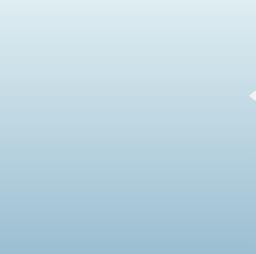














 Shanon O’Donovan is a copywriter on behalf of Cath Kidston.
Shanon O’Donovan is a copywriter on behalf of Cath Kidston.
Show that management values the importance of the HR function, and has a commitment to development and improvement of HR staff.
Ensure that each person in your HR department has a standard and consistent understanding of policies, procedures, and regulations.
Place your HR team in a certification program as a rewarding team building achievement.
Certified HR professionals help companies avoid risk by understanding compliance, laws, and regulations to properly manage your workforce.
HR Professionals lead employee engagement and development programs saving the company money through lower turnover and greater productivity and engagement.
A skilled HR professional can track important KPIs for the organization to make a major impact on strategic decisions and objectives, including: succession planning, staffing, and forecasting.

 By Kate Zabriskie, Business Training Works, Inc.
By Kate Zabriskie, Business Training Works, Inc.
“I can’t take it anymore! We’re short-staffed, I’m killing myself to hold it together, nobody says thank you, so goodbye! Life is too short for this. I can work somewhere else.”
“I was doing just fine working from home. Now they’re making us go back. Call me crazy but spending three hours in the car doesn’t excite me. I’m updating my resume this afternoon.”
“I’m not passionate about this place. We’re all about stuff I don’t care about, I don’t connect with my manager, and the pay isn’t that great. I need to find a better fit.”
Thoughts such as those happen many times every day in organizations large and small. While a certain amount of turnover is healthy and normal, when an employer hemorrhages staff, it can take years to recover.
And let’s face it, retention is tough in a lot of places. While you can’t make people stay, you can take some critical actions to address the main reasons people say sayonara, so long, and see you later.
Smart managers do what they can to minimize the goodbyes in good times and bad

If you haven’t done a good job cultivating a good relationship with your direct reports, today is the day to start. Evaluate your behavior. Would you want to work for you? Would anyone else? Look for patterns. If people don’t stick around and they don’t cite another plausible reason for their decision, guess what? It’s probably you. You never hear from any of them after they depart? It’s definitely you. Get
honest with yourself. Are you a yeller? Inconsistent? Punishing? Self-centered? Uncommunicative? It’s time to get to work. Identify the behaviors that would cause someone to leave and stop doing them. Next, identify the behaviors that would encourage someone to stay, and start doing those things. Needing to be a better manager is a simple diagnosis with a hard prescription. If you don’t know how to get better on your own, take a class, read some leadership books, craft an action plan, hire a coach, or take a combination of those actions.
While people do outgrow jobs, and sometimes there is nowhere to move them, you can solve this problem. If people can do the job and become restless, look for special projects, cross-training opportunities, and other extras. At a minimum, that extra attention should slow their departure. If the problem is reoccurring, ask yourself what kind of person would be right-sized for the position, and consider hiring for those attributes the next time.
It’s called a job, not purgatory. While there are certain people who live to work, most people want some semblance of a life outside of work. Ask yourself if you’re running a sweatshop. Does everyone need to be in the office from nine to five Monday to Friday? If not, a little flexibility can go a long way toward building loyalty and making a job attractive. Next, think about measuring people based on output instead of the hours worked. If employees must type on a keyboard a few times to satisfy some sort of monitoring software, you’re most likely not endearing yourself or your organization. What? You don’t trust them to do their work? Then here’s a simple answer for you: anyone who needs to be micromanaged probably shouldn’t have been hired in the first place.
Not every business touches the heartstrings, but every business should tell its story in a compelling way. If it’s not a story about the business itself, perhaps it’s a connection to the role. Still nothing? If what your organization does isn’t setting the world on fire, think about other selling points. Could it be you have a warm and inviting family atmosphere? Are you a great training ground for something else later down the road? Can employees stop thinking about work the minute they walk out the door? With a little bit of work, you can find a meaningful story for almost any organization.
As the saying goes, you get what you pay for. So if you’re
paying 1983 prices, why are you surprised when people leave? They can do better elsewhere. Nothing personal, it’s just business. If you pay below-average wages and have nothing to balance the shortfall, you’re going to lose people. You don’t think the job is worth more money? That’s too bad, your competitors do, and you lose. Stay aware of what’s happening in your industry, market, and so forth. Also, don’t only offer money when people let you know they’ve gotten another offer. At that point, it’s often too late.
Economies fluctuate. Sometimes the market favors employers, and other times employees hold a more favorable hand. Smart managers realize the cyclical nature of retention and do what they can to minimize the goodbyes in good times and bad. What do you need to do differently?

Kate Zabriskie is the President of Business Training Works, Inc., a Maryland-based talent development firm. She and her team provide onsite, virtual, and online soft-skills training courses and workshops to clients in the United States and internationally. Would you like to comment?


Howmany people in your friendship circle are in some degree of emotional funk? Emotional funk is more than the day-to-day ups and downs of everyday living and less that the deep anguish of despair. Some may feel depressed about their ability to recover from past trauma. Others may feel anxious about their uncertain future or lonely from the isolation of the pandemic years.
Depression from the past, anxiety about the future, and loneliness in the present may lead to a vicious cycle of helplessness where the emotional malaise stifles actions leading to a greater emotional malaise.
In personal lives, this emotional funk may show up or lead to physical health problems (insomnia, addictions, weight gain/loss), relationship challenges (divorce, anger, loneliness), and self-doubt (inability to take risks, plan, be motivated).
In a professional work setting, this emotional funk may lead to job hopping, quiet quitting, and overall lower engagement.
Business and HR leaders who help others replace emotional funk with vigor, self-doubt with self-confidence, passivity with agency, pessimism with optimism, and helplessness with hopefulness will enable people to discover a virtuous cycle of well-being in their personal and professional lives.

If your friends or colleagues (ahem, or even you) are tending into an emotional funk, what can you offer?
Let me suggest five principles, personal actions, and reflection questions based on thoughtful insights by Martin Seligman, and others. These ideas offer you a blueprint for replacing helplessness with hopefulness at work and at home.
In general, there are three levels of well-being or happiness:
Level 1: Find pleasure and have fun by doing things that you enjoy (food, entertainment, exercise).
Level 2: Create positive processes by having good habits and patterns.
Level 3: Discover meaning by identifying and living values.
Be careful to not be distracted by constant pleasure hunting, but seek more fundamental meaning that comes from clarifying and acting on values, expressing gratitude, and serving others. Ponder on questions like:
● How do I define success?
● Who am I grateful for?
● Who can I serve today?
These questions help you explore a higher level of well-being focused on meaning.
Focus less on circumstances and more on choices. Research shows that when animals or people face events they can’t do anything about, they experience learned helplessness and emotional funk. In contrast, when people recognize and make choices, they have learned hopefulness.
Choices come from recognizing and acting on the principle of agency. An agent is someone who accepts responsibility for action. Agency means that you clarify what want and what price you will pay for realizing your desired outcomes. Human progress comes from agency and making choices.
In employee surveys, agency shows by up adding “did I do my best” to traditional engagement questions:
● Did I do my best to build relationships with others?
● Did I do my best to improve my skills?
● Did I do my best to earn my pay?
These questions focus your agency and responsibility for your choices.
One of the foundational theories of motivation is called expectancy theory which simply states that efforts will lead to desired outcomes. Without a high probability that actions will lead to outcomes, emotional funk continues. Efficacy encourages you that you can achieve your goals. Set stretch but achievable goals within your zone of influence. Take small actions to make short-term progress to attain longer-term goals.
Ask yourself:
● What are my goals that I can reasonably accomplish?
● What are some first steps in making progress to reach these goals?
● How can I maintain confidence that I can reach my goals?
These questions help you claim ownership of your goals and actoins.
It is often impossible to control circumstances, but it is possible to control response to the circumstance. Turning pessimism into optimism comes by tuning into the pessimistic thoughts you might have (“I can’t do this.”) and arguing against these negative attitudes (“I can make progress on what I need to do.”)
By facing and overcoming self-defeating ideas and behaviors, you can gain confidence in your future opportunities. By looking for the positive in any situation, you can begin to learn optimism about what can happen.
Ask yourself these questions:
● What often gets in my way of reaching my goals?
● What are the cognitive distortions of these self defeating thoughts and actions?
● What can I learn from what I have done?
These questions help you be honest and transparent with yourself to learn from your past and to look forward with optimism.
It is easy to look back at what has gone wrong to learn; it is also helpful to look forward to creating what can be. When you imagine a host of possible goals for your future, your horizon is brighter than your past. Imagining new options comes from observing what others have done that you might do, envisioning yourself in new settings, and conceiving new options that you may not have considered.
Ask yourself these questions:
● If I could do or accomplish anything I aspire to in the future, what would that look like?
● What are the options for my future that I may not have considered before?
● How do I observe others and create my next practices based on what they have done?
These questions help you imagine and envision what can be. Your unlimited imagination poses possibilities and offers hope.
Summary: Emotional funks exist in our friends, colleagues, and ourselves. They often foster an attitude of helplessness that discourages with pessimism.
Intentionally, they can be replaced with hopefulness that encourages optimism.
When business and HR leaders help employees become hopeful, not only do individuals prosper, but so do organizations and communities. Providing hope is an emerging opportunity for an emotionally vulnerable world.
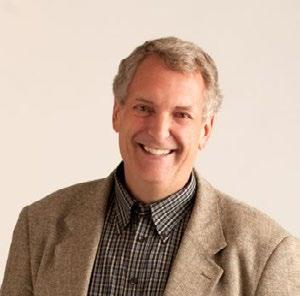
» How do I define success?
1 Recognize types of well-being I seek meaning in my life.
2 Exercise agency and responsibility I am responsible for my choices?
» What am I grateful for today?
» Who can I serve?
» Did I do my best to build relationships? Improve my skills? Earn my pay?
» What are my goals that I can reasonably accomplish?
3 Believe in efficacy I can achieve my goals.
» What are the first steps to meeting my goals?
» What gets in my way of reaching my goals?
4 Learn and practice optimism I can achieve my goals in the future.
5 Imagine a better future There are lots of goals I can achieve
» How can I overcome my self defeating behaviors?
» If I could accomplish anything, what would it be?
» What are options for my future I may not have considered?
you like to comment?
Dave Ulrich is the Rensis Likert Professor of Business at the Ross School, University of Michigan, and the Co-Founder & Principal at the RBL Group. He has helped generate award-winning databases that assess alignment between external business conditions, strategies, organization capabilities, HR practices, HR competencies, and customer and investor results.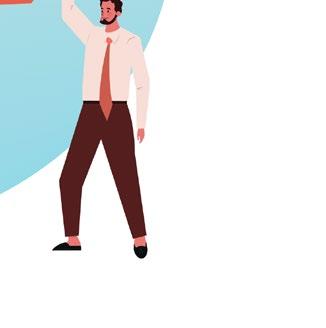





priority for business leaders has always been to ensure employee development programs emphasize productivity, helping keep employees focused on the tasks at hand and end results. However, as we saw during the pandemic, and continuing into today’s uncertain economic, political and unstable times, an even brighter spotlight is being placed on productivity, due to executive concerns surrounding working from home and employee engagement. The Harvard Business Review estimates that the costs associated with presenteeism - the worst form of productivity loss that occurs when people are on-the-job but working in a state where they are unable to give their bestphysically or mentally - are upward of $150 billion a year. Productivity has essentially become an invisible bogeyman, causing leaders to worry about how their employees are able to stay focused on their goals, given the stress, distractions and fears in today’s world.
Furthermore, as the line between the personal and professional worlds has dissolved, the pressures and stresses on the employee are also looming like a monster in the corner, threatening to grow and consume personal energy. Interest rate increases, inflation, recessions, rising crime rates, political unrest, work project deadlines, department budget restrictions - the list goes on and the ominous fear of lost productivity from all points of view grows larger. These distractions are constantly thrust upon us in every physical and digital room we enter - our phones, tablets, streaming services, social media, conversations with friends and family, at home and at work. So how can one possibly remain focused on tasks at hand, when surrounded by constant and fearsome interruptions?
Luckily there is a hero who can silence the productivity boogeyman while empowering both leaders and employees to relax those fears and create a productive and fulfilling workday. It is the power of human energy. While the time we have in a day cannot change, how we manage and direct our personal human energy has a direct impact on how we perform and feel. Personal energy management has the power to increase our human capacity, which is essential in combating presenteeism and lost productivity.
Sometimes, underlying behaviors or ways of thinking can drain our personal energy and leave us with less capacity to accomplish tasks at hand. These “blockers” are unique to each person; one may be plagued by rumination and are therefore unable to fully focus in a meeting, or another may lack the ability to prioritize due to struggles with pleasing people. However, by using proven strategies backed by psychology and neuroscience, individuals can now rewire their brains to identify and address these “blockers,” to not only remain focused throughout the day, but restore an optimal sense of mental well-being and personal energy. By providing employees with a clear picture of what is zapping their individual energy and mental capacity, and providing them the tailored techniques and training needed to better manage and direct their energy -physically, emotionally, and mentally – organizations can transform and increase productivity, while also reducing employees’ stress and anxiety levels
Coupa Software’s Antoinette Reese, a customer marketing specialist, stated, “This type of employee development, using the power of AI and personalized coaching, has helped me achieve peak performance at work. It has enabled me to have this new lease of energy whereby I can redirect that into my work, into my customers, into the people I work with, and into my colleagues.”

Pascale Royal, Director of Executive Customer Programs at Coupa, said it best in terms of the impact personal energy can have on someone's life, “[I] went from this incredible reality that I was overwhelmed and stretched too thin, which in turn were too many triggers to my mental health,” to, “understanding that I can bring some clarity and declutter what was happening in my mind and then have the tools to actually manifest change.” Her personal development experience, “afforded me and gave me the actual tools that I needed to figure out how to maximize my capacity and recharge my energy.”
Brittany Valdez, a community engagement manager at Microsoft, commented on the impact
of addressing energy blockers to increase her productivity, “the technology and techniques that are available now are aligned to easily embrace mental and behavioral shifts, setting the foundation to create lasting, better habits.”
The fact remains that life’s uncertainties are not going away, and issues and concerns surrounding productivity will remain present in our lives. However, ensuring employees have access to the right resources, resources that educate them on how to personally manage, direct, and optimize their energy so that they can work effectively and efficiently, will help banish the productivity bogeyman from our lives. There is no better time to change minds, change lives, and empower teams and organizations to live life at full capacity and productivity.
Sarah Deane is the CEO and Founder of MEvolution. As an innovator working at the intersection of behavioral and cognitive science and AI, Sarah is focused on helping people and organizations relinquish their blockers, restore their energy, reclaim their mental capacity, and redefine their potential. Her company, MEvolution, is a scalable, science-based, personal development system that measures and systematically increases human capacity by teaching people how to manage, direct, and optimize their personal energy, which makes living life at full capacity a reality for everybody.
Would you like to comment?
 By Colleen Doyle Bryant, LoveWell Press
By Colleen Doyle Bryant, LoveWell Press
Afew years ago, a corporate positioning expert argued that companies shouldn’t include integrity and teamwork in their corporate values statements
because ethical and collaborative behaviors are a given, meaning any company and its employees should be following standard expectations for decent behavior
as a matter of course. Integrity and teamwork are so elemental, the author argued, that to call them out would raise suspicion about company culture.
Fast forward to 2022 and consider our current social climate. Today, people argue that we’re in a post-truth society where facts don’t matter and honesty is a flexible term. Rudeness and even aggression are standard behavior for some, fed by goading influencers and the ease of a cutting reply on social media. What effect is this having on people’s work lives? Can companies still assume that employees have a shared sense of what it means to act with integrity and to treat others decently? The data shows they probably can’t.
According to a recent MIT Sloan report, during the first six months of the Great Resignation, toxic workplace culture was the leading cause of employee attrition—and it was 10 times more powerful at predicting employee turnover

than how employees viewed compensation. Based on the researchers’ analysis of employee reviews on Glassdoor, the top 5 attributes of a toxic workplace all have to do with whether employees feel they are treated with respect and fairness, and whether fellow employees are ethical and honest. These are all behaviors that make up common decency, which are the norms for how people treat each other to encourage trust, fairness, and cooperation. The prevalence of toxic workplace cultures shows it’s a good time for a back-to-basics reminder about what it means to be a decent human.
If we look back in time, our understanding of what it means to be a decent person grew out
of the reality that we humans need each other. While each person looks out for their own best interest, we also know that our chances of surviving and thriving are better when we cooperate with other people. Over thousands of years, humans across widespread geographies repeatedly found that certain behaviors helped people work well together. Those ways of acting became the foundation for what we call common decency.
In my research, I found there are four core values that define decent behavior: Truth, Respect, Responsibility, and Compassion When we face a question of how we should treat others and whether an action is ethical, we weigh and balance the competing demands of these four values.
Truth is about speaking and acting with accuracy. This includes being sincere about our motives, and acting with honesty—so not deceiving, cheating, or manipulating. Being truthful helps people know we are trustworthy, which is essential if we want people to trust and cooperate with us. In reality, we don’t really tell the whole, brutal truth all the time. The right amount of truth sits on a continuum between too little of it (deceit) and too much of it (cruelty). We figure out how to share the right amount of truth, in the right way, by looking at whether we’re telling the truth while also being respectful, responsible, and compassionate.
Respect is at the heart of how we treat people. Being respectful means we treat someone with care because we think it’s important to do so. That means we may not be acting respectfully because we esteem the person directly. We don’t have to admire or even agree with someone to treat them with respect. Instead, we treat everyone with respect because we think it’s important to maintain civility in the workplace, and we value the idea that all people deserve dignity. Acting with the right amount of respect rests on a continuum between too little respect (degrading/ devaluing someone) and too much respect (elevating the worth of something to such a degree that we sacrifice our other principles for it.)
Responsibility is about acting in a way that promotes well-being for ourselves and our relationships. When we’re being responsible, we use self-control so we’re more helpful than hurtful. We do our part in the give-and-take of a relationship and we accept accountability when we don’t live up to our end of the bargain. The right amount of responsibility rests on a continuum between too little responsibility (neglecting or harming well-being) and too much responsibility (taking on so much that we unintentionally cause harm).
Compassion is how we help each other through the hard times and revel in the joys together. Compassion doesn’t mean we can (or should) alleviate all suffering, but it does mean that we see the human behind the suffering and we’re inspired to act in a way that truly helps. The subtlety here means we need to consider what the responsible thing is to do so we don’t inadvertently do more harm than good. Compassion rests on a continuum between too little compassion (causing or enjoying someone’s suffering) and too much compassion (causing harm, despite good intentions).
Our shared understanding of common decency can be a helpful tool for HR managers who are trying to set clear expectations for behavior in the workplace. These fundamental behaviors are part of human
evolution, and scientists explain that our brains and bodies have adapted to help us know when we’re acting in a way that fosters trust, fairness, and cooperation in line with these four values.
So common decency is a back-to-basic way of talking about soft skills and emotional intelligence that taps into core human knowledge about how to treat people with integrity and respect. Using these values as a guide, HR managers can create specific examples, relevant to job type or industry, that help employees truly connect with how they contribute to a positive workplace culture.
Colleen Doyle Bryant is the author of Rooted in Decency , which explores why common decency has declined and how we can move forward to a place of more trust and cooperation. She’s the author of 5 books and more than 50 teaching resources on values and character that are used in curriculums around the world. Would you like to comment?

HR.com prepares HR leaders to be strategic business leaders by curating and delivering best-in-class products and services so you don’t have to waste time seeking out content on your own. We leverage technology and experience to provide you with customized solutions to best meet your professional development needs at every stage of your career.
From on-demand to cohort-based offerings, below is a listing of virtual courses that will challenge and empower you by giving you the tools to drive innovation and success in your organization.
Radically Improve Your Self-Confidence and Transform Into Your Best Self. This course is designed to help develop self-awareness, improve self-management, and increase emotional intelligence to achieve self-mastery.
Create the Life you want Personally and Professionally. Learn how to determine and assess your habits to shift from what you are thinking to HOW you are thinking so you can optimize fulfillment in your relationship with yourself and with others.
Learn What Motivates Yourself and Others. Transform into your Best Self! This virtual course helps individuals develop their self-awareness, improve their communication, self-management, and emotional intelligence so they can achieve self-mastery.
Learn practical coaching skills and tools you can put to work in your organization right away with the first part of the Shift Corporate Coach Program™ on HR.com! This 2-part program provides business leaders with the right coaching toolset for ultimate coaching success through an independent online learning program and live virtual coaching clinics and circles.
Learners will understand the difference between motivation and inspiration and how inspiration—not motivation—is the heart of great leadership. Inspiration in the workplace is about destiny, mastery, purpose, and love. Learners will master how to ignite the Spark of inspiration within, inspiring yourself first, so that you grow your Flame, using the CASTLE® Principles that inspire others, carrying your Torch to inspire the world.
Become a Meeting Rock Star! Learn how to develop strategies to apply situational leadership to help move the team forward and run highly productive live or virtual meetings.
What is leadership and why is it important? How does a leader encourage change without triggering fearful resistance? What are the key elements of leading an effective team? What is the role of charisma in leadership? How can a leader achieve work-life balance? This suite of courses addresses all of these questions and many more.
Gain access to more expert-led leadership courses.
At HR.com, we are committed to educating and inspiring HR professionals and helping them build meaningful and impactful careers. With products and resources rooted in education, research, and leveraging cutting-edge technology, we help at every career stage - and over 1.92 million HR pros agree! (How could that many people be wrong?) By delivering best-in-class learning products, 250+ annual webcasts and 30+ world-class events, and innovative and thought-provoking research through the HR Research Institute, HR.com strives to inspire and strengthen workforces to change the world. HR.com also offers the most comprehensive HR certification exam preparation and guarantees a passing score on all SHRM and HRCI certification exams. Technology and experience drive our customized solutions that will help you become the best and most successful version of yourself.
 By Dr. Elizabeth Moran, Elizabeth Moran Transformation
By Dr. Elizabeth Moran, Elizabeth Moran Transformation
While many of us plan for risks by imagining all the things that could go wrong in an unknown future, we now know that imagining what could go right not only feels better but is also a strategy for gathering more scientific support to
achieve better results. A growing body of neuroscience research confirms that optimism, or feeling hopeful about what’s possible in the future, helps move us from thoughts limited by fear to possibility thinking, where better realities can be imagined. Taking
this a step further, experiments in quantum physics reveal that focused attention does indeed affect matter (Radin, 2016; Dispenza, 2021). In other words, what we give our attention to does influence what we can create.
Using optimism isn’t a new idea for many leaders who have been “catching team members doing something right,” as one of my clients says, and celebrating wins or focusing on strengths to help team members be and feel their best at work. But here’s why this still under-utilized strategy will be even more critical in the future – the rate of change, and the uncertainty that results, continue to increase exponentially.
Uncertainty creates fear, which takes priority for emotional processing in our brains. In fact, our brains are always consciously and unconsciously (out of our awareness) scanning for and reacting to threats in the environment. Scanning for external problems or obstacles is perfectly normal, you just don’t want this to be your primary
strategy for managing future outcomes.
To clarify, using optimism isn’t about ignoring difficulties or not allowing for negative emotions: it is important to take time and discuss what could go wrong or potential obstacles that could impede forward movement during change. But equally important is to create opportunities to collectively imagine something better, a positive future state that each team member participates in visualizing, where they can play a key role and benefit. Optimism enables us to see possible ways forward rather than being stuck in all the things that won’t work. In this sense, optimism as a leadership strategy isn’t just the result of things going well; it’s a tool you can use during a change to actively create better results.
If we’re not focusing on a positive vision of the future, our brains default to the worst case scenario, especially during change. Given the focus on and availability of bad news on multiple fronts, plus a brain that gives more attention to what has gone wrong and what else could go wrong, catastrophic thinking becomes the default. Viewing the future through this lens means experiencing the unknown as bad vs simply neutral. People (and their brains) react to “thoughts” about the future like they are actually happening vs. simply possibilities. This causes more anxiety, leading to feeling overwhelmed and hopeless. Leaders play a key role here in helping course-correct their and their team members’ brains back to neutral.
Quick start guide to practice optimism and positive future visioning with your team now:
1. Share this article with them and ask if they're willing to give this a try. You’ll be providing an opportunity to collectively activate the possibility circuits in your brains, which can help the whole team create forward movement.
2. Take 30 minutes in a team meeting and focus your collective attention on a positive future. When the attention of the whole team can agree on the same information, you then create a collective, conscious vision. This collective vision can determine how everyone accepts and then works to create the new reality. You may need to tell your team to forget about how you’ll get there for the moment and just imagine the goal has been reached.
Here are some prompts to help imagine a better future state:
● What is the best possible outcome we could create?
● If, for a few moments, we believe that we are going to reach our goals what would that mean for all of us?
● Where can we see ourselves if this works out?
Give people a chance to jot down some notes and then ask to hear their answers. Reflect
on similarities and explore differences. The goal here is to come up with a common positive future vision, even though there can be some individual differences. Intuitively this makes sense and is how most innovation happens. People need to “have a picture” of what’s possible first before turning it into a reality.
3. With your vision in mind, explore the work and actions the team is currently doing, especially the tasks and actions that they each enjoy doing. Continue the conversation collectively and then individually with your team members:
● What actions or tasks you enjoy doing do you see yourself continue doing in the future state?
● What will need to change given the new desired future state? (This can be the work itself and/or how the work gets done)
● What can we start or stop doing, that would make the outcome we desire more likely?
Concerns can be good warning signals to pay attention to but aren’t good as a baseline from which to operate day-to-day. Remember, negative thoughts are not reality; they are just a possibility, so don’t give them more power than they deserve or mistake an anxious thought for a real problem that needs to be solved. Continuing to remind yourself and your team about
this positive future vision gives you something to aim for when you start to get weighed down by doubt or anxiety.
Dr. Elizabeth Moran is an experienced leader, executive coach and author of the upcoming book, Forward: Leading Your Team Through Change . Partnering with leaders and teams from Fortune 500 companies to technology start-ups, Dr. Moran has successfully supported large and small-scale transformation through practical advice and actions that simplify leading through change.Prior to starting Elizabeth Moran Transformation, she was Vice President of Global Talent Development at ADP. She also held leadership, team and talent development roles at Bloomberg, Lehman Brothers, Getty Images, and Time Inc. In conjunction with her vast experience in technology, fintech, and financial services, Dr. Moran has worked with leaders and teams in the professional services, pharmaceutical, energy, government, and non-profit sectors.
Would you like to comment?

Life comes with stresses that drain energy. Since you can't remove stress altogether, you need to boost your ability to cope, so that you’ll have the energy and confidence to face any sort of challenge. Stress tolerance can help you manage demanding workloads, establish clear priorities, meet deadlines, and perform well under pressure. Hiking your sense of optimism also adds to your ability to deal with stress. Here’s what you need to do to control stress and hike optimism:
1
. Prioritize daily tasks and eliminate non-essentials.
2
. Build your emotional resilience.
3
. Leverage your energy.
4. Engage in self-care.
Organizing your daily priorities can reduce a major source of stress. Creating to-do lists and organizing tasks by priority will help you understand what needs to be done, what can wait, and what can be delegated. It will also show you whether you have too many tasks. If that is the case, be comfortable asking for help.
When people are busy, they respond by taking on more, not less. This creates burnout because you do not have the opportunity to build your emotional resiliency.
To develop your emotional resiliency, try these ideas:
● Practice relaxation techniques. Your body is not a machine. It won't function well if you don't give it time to rest. Try to meditate or practice deep breathing techniques.
● Be grateful. Start a gratitude journal, and every day, write five things you are thankful for.
● Spend quality time with the people you care about. Build solid relationships to increase the level of support around you.
Remember, time is finite (there are only twenty-four hours in a day), but your energy is not. Are you a morning person or a nighthawk? When you have a full workload, it is advantageous to know when you do your best work, so you can prioritize your schedule to focus on the most demanding tasks when you are at your best. Save your downtime for less demanding duties.
Taking care of your body and mind will enable you to become more stress tolerant. A healthy diet, regular exercise, and solid sleep help mitigate the stress and damage your body deals with daily. Also, set boundaries with others by learning to say no to tasks you can't complete. Schedule quiet time between meetings, and make sure you unplug from your workday, so the lines between work and home are not blurred.
When you believe that anything is possible, you eliminate
When you believe that anything is possible, you eliminate barriers to achievement. When you model this behavior, it causes others around you to feel that they can also achieve at a high level. Optimistic people tend to expect good things to happen and anticipate the best outcomes in any situation. They trust that things will turn out well, which helps ward off stress.


1. Set small, realistic goals you can achieve.
2. Accept that failures will happen.
3. Phone a friend and talk through your negative thoughts.
4. Add positive practices to your daily routine.
To improve your mindset, you must balance realistic and aspirational goals by outlining where you are, where you want to be, and how you plan to get there. When it comes to enhancing optimism, you can dream big, but start small. Taking baby steps toward larger goals is a simple way to boost your confidence as you achieve the goals you set for yourself.

You will mess up. However, how you choose to recover from your missteps can lead to an optimistic outlook. Failing is simply part of learning. So when it happens, don’t stop! Even if you don’t feel optimistic about having failed at something, finding the
knowledge contained in the mistake will help boost your feelings of optimism.
Share your ups and downs. Lean on a friend when you find yourself ruminating over the same negative thoughts. By sharing them with your friend, you will be able to let them go. Sometimes, simply speaking your negative thoughts out loud can help you hear them for what they truly are, just thoughts and not facts.

Positivity can feel hard to come by when you have low optimism. Similar to taking baby steps toward your goals, find small ways to feel good about yourself, because once you do, seeing gloomy things in a brighter light becomes easier. To challenge your negative, self-limiting beliefs, write out positive affirmations, keep a gratitude journal, or share the positive highlights of your day with family and friends.
Carolyn Stern, the author of The Emotionally Strong Leader, is the President and CEO of EI Experience, an executive leadership development and emotional intelligence training firm.



She is a certified Emotional Intelligence and Leadership Development Expert, professional speaker, and university professor whose emotional intelligence courses and modules have been adopted by top universities in North America. She has also provided comprehensive training programs to business leaders across the continent in highly regarded corporations encompassing industries such as technology, finance, manufacturing, advertising, education, healthcare, government, and food service.
Would you like to comment?






